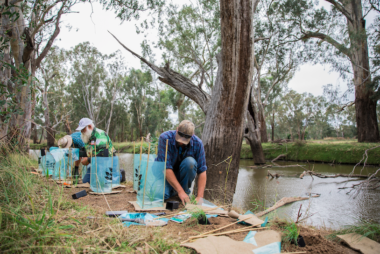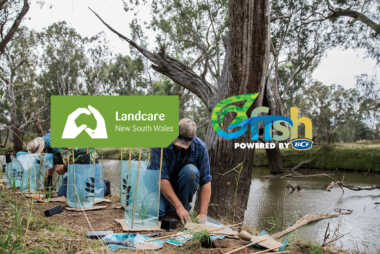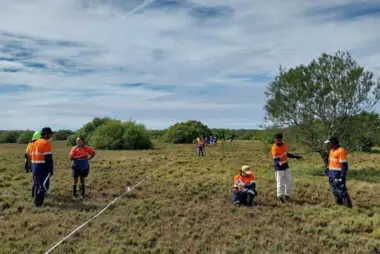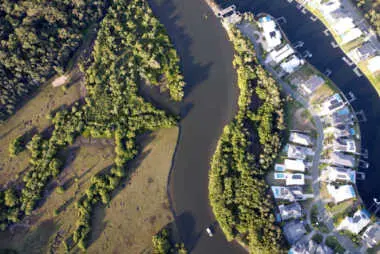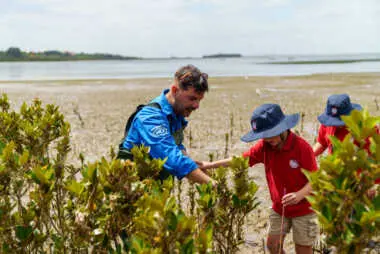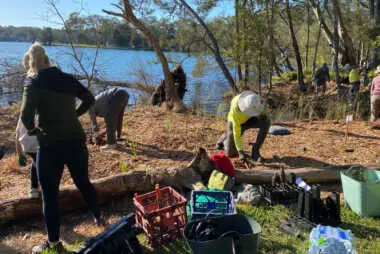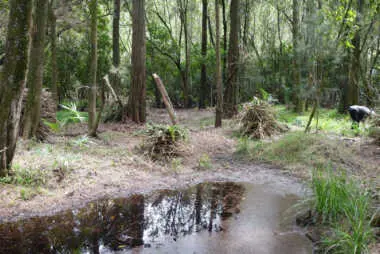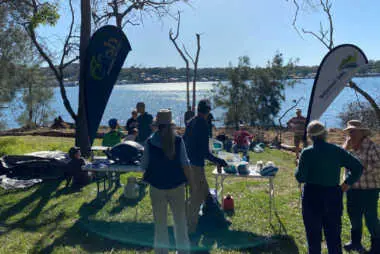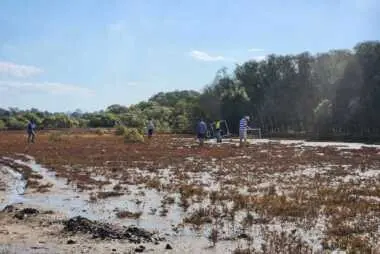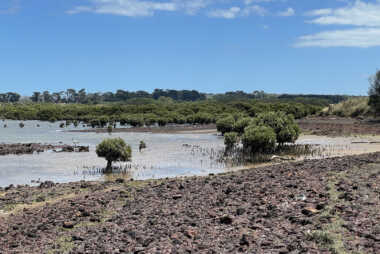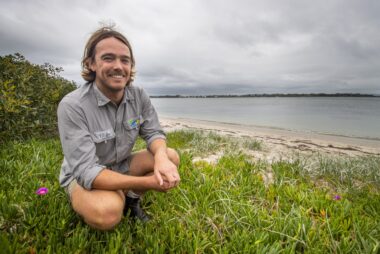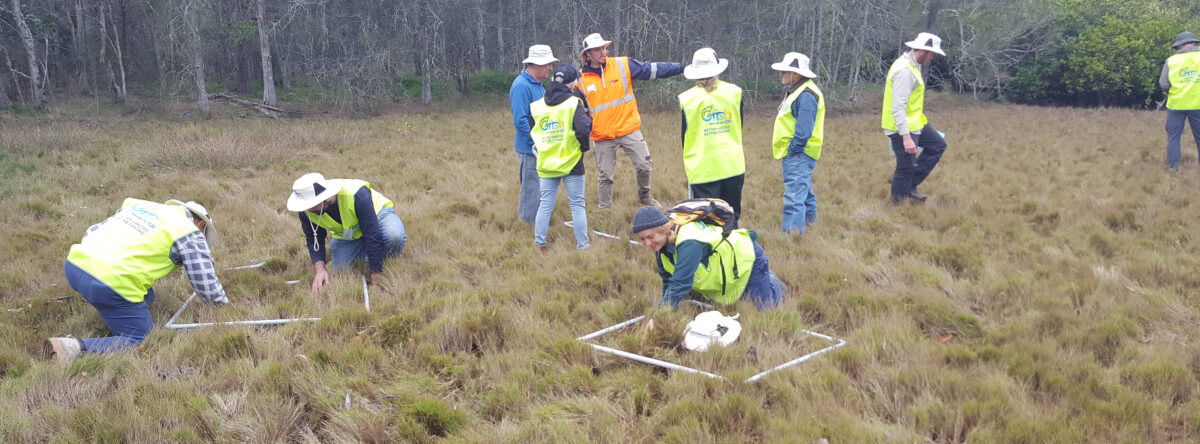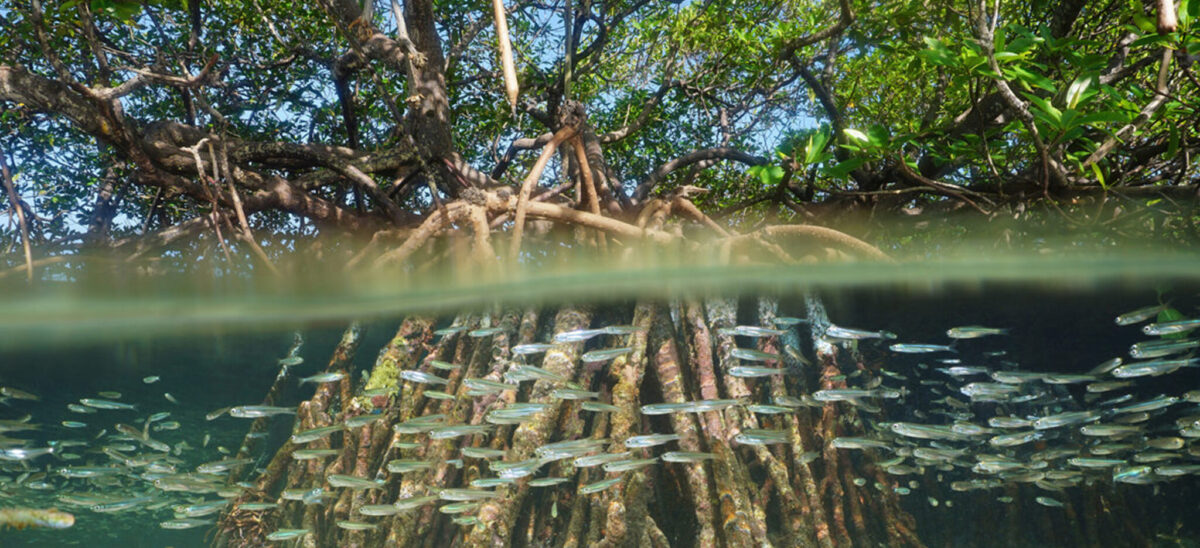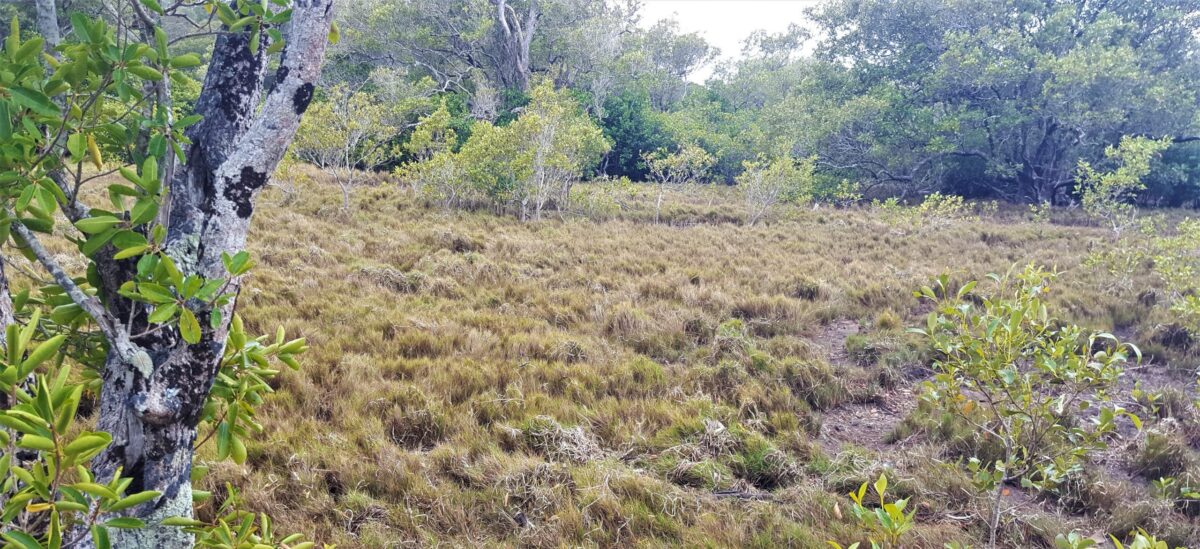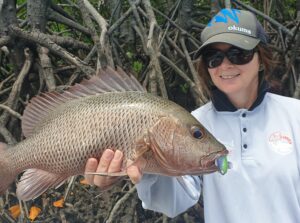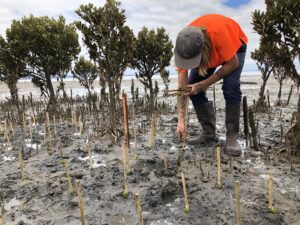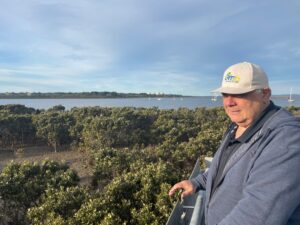The area bordering waterways, such as riverbanks, is known as the ‘riparian zone’. The presence of native trees and vegetation in this zone is important to the stability of the riverbank, water quality and native fish populations.OzFish delivers many riparian restoration projects across ...
Making mangrove and saltmarsh habitat healthy again is an OzFish hallmark. We rebuild these habitats and improve our fishing opportunities, for this generation and those to come.
Sometimes, this includes simple fixes, like working with farmers to keep livestock out of saltmarsh. Sometimes, repairs are more profound, requiring long-term assessment and planning. But it is all possible.
Fishable Cities Projects
OzFish Unlimited and Landcare NSW volunteer groups have utilized our past success in community engagement and project management to deliver a series of restoration works across New South Wales. These activities assisted with the protection of critical waterways, built environmental stewardship, ...
OzFish Unlimited are working closely with Yaegl Traditional Owners Aboriginal Corporation (TOAC) to help restore saltmarsh and mangroves in the Clarence River Estuary, which are culturally and ecologically important native title sites on Yaegl Country.
OzFish is working with the local Gold Coast community to improve the water quality, fish habitat, overall health and amenity of Saltwater Creek Coomera, as part of the Australian Government’s Urban Rivers and Catchments Program, which aims to improve the health of urban waterways for native ...
OzFish joined forces with students from grades 4 and 5 at St Mary's and St Joseph's Primary School to immerse themselves in a habitat restoration project aimed to revitalise the mangrove forests nestled within Hastings Foreshore, Westernport Bay in Victoria.
Funded by the Endeavour Energy Community Grants Program, this Collaboration between Shellharbour City Council, Illawarra Landcare, Tullimbah Landcare, and OzFish aims to restore a degraded section of saltmarsh along the foreshore at Karoo Bay.
OzFish Unlimited, local organisations, rec fishers and community members are working together to improve fish habitat at Brisbane Waters, located in the Central Coast region of New South Wales.
Lake Macquarie's delicate saltmarsh communities have faced threats due to coastal development and land reclamation. This development has resulted in significant losses, impacting the fishery. In response, OzFish Unlimited’s Lake Macquarie Chapter set up the Styles Point Saltmarsh Restoration ...
Through the Caboolture and Maroochy community’s combined actions, native fish habitat continues to be protected and restored within Queensland. Restoration included improvements of in-stream habitat, saltmarsh monitoring a unique shellfish reef trial and and riparian and wetland ...
OzFish is working with Bass Coast Landcare Network, with funding from CoastCare Victoria, to restore the mangrove forests in Western Port Bay, Victoria. The project project aims to plant up to 2,000 individual mangroves to bridge the fragmented stands of mangroves currently at the site. The ...
The OzFish Hunter Chapter are working in collaboration with Lake Macquarie Landcare Volunteer Network, Bahtabah Local Aboriginal Land Council and Lake Macquarie City Council to rehabilitate Salt Bay and Black Neds Bay. The project will plant 1,200 native species
Mangroves and saltmarshes provide a nursery for juvenile fish, before they move onto deeper waters, they buffer coastal communities against extreme weather events, stabilise coastlines and slow or reduce soil erosion. Despite all this, half of the world’s mangroves and even more saltmarshes have already been cleared or destroyed – and those that remain are under threat.
Mangrove and saltmarsh habitat restoration initiatives
Mangrove forests and saltmarshes may be funky to our human senses, but they are key habitats for our fishy friends, and can survive salty conditions that other vegetation cannot tolerate.
- Habitat assessments of these environments
- Monitoring water quality and changes to water management
- Facilitating mangrove seed collection and planting
- Planting of native trees and bushes
- Restoring natural tidal flows to the area
- Fencing to keep out livestock
- Weeding and revegetation
- Creating vegetative buffers
- Removal of rubbish
- Reduce or formalise access points
- Signage and community engagement to support information on how to help protect the fragile habitats
- Maintaining connectivity and movement between water systems
- Monitoring feral pests
What’s so important about mangroves to fish?
Mangroves are a species of trees and shrubs that grow in salty environments along the shoreline of coastal rivers, bays, and estuaries, well known for their pungent smell. They are specifically designed and have an adapted circulatory system which helps them survive in harsh conditions. Mangroves are easily identified by their peg root structure which helps them to breathe.
What they do:
- Help break down storm waves for coastlines
- Filter out the nasties in water that runs-off urban environments
- Serves as shelter for young fish, crabs, prawns and other invertebrate
- A source of food for fish and birds
- Captures and stores large amounts of carbon
Fish need saltmarshes more than you realise.
Saltmarshes are a coastal wetland made from mud and peat, which is a spongy layer of soil consisting of decomposing plant matter. This soft substrate, occurring along protected shorelines, is flooded and drained by salt water from the tides. Saltmarsh habitat contains a specialised community of plants which includes sedges, rushes, reeds, grasses, succulent herbs and low shrubs.
What they do:
- Provide shelter and food for fish, especially smaller ones
- Filters rubbish and nutrients that enter estuaries, maintaining water quality
- Protects the shoreline from erosion
- Slows and absorbs rainfall which reduces flooding
- Captures and stores large amounts of carbon
Mangroves and saltmarshes are ecologically important, providing a link between the land and water.
Sadly, they have been negatively impacted by development, land clearing, weed invasion, rubbish and pollution, uncontrolled access, and changes to water flows. This reduces the health of these environments which is bad news for our fish. As the population increases in coastal areas, the risk to these precious habitats escalates. They are also affected by environmental influences such as climate change and the rise of sea levels, which changes the structure of ecological communities.
Volunteer with Us
Join our community of volunteers who share our determination to restore fish habitat across Australia.
Make a Donation
Donate today to support our mission to restore our mangroves through community-driven participation and ownership.
Become a Member
Help us raise funds for our restoration initiatives by becoming an OzFish member today. Learn more about member benefits!
At OzFish we are incredibly proud of the mangrove restoration efforts undertaken by so many of our OzFish volunteers, our fish need more help to recover now more than ever. And you can help.

